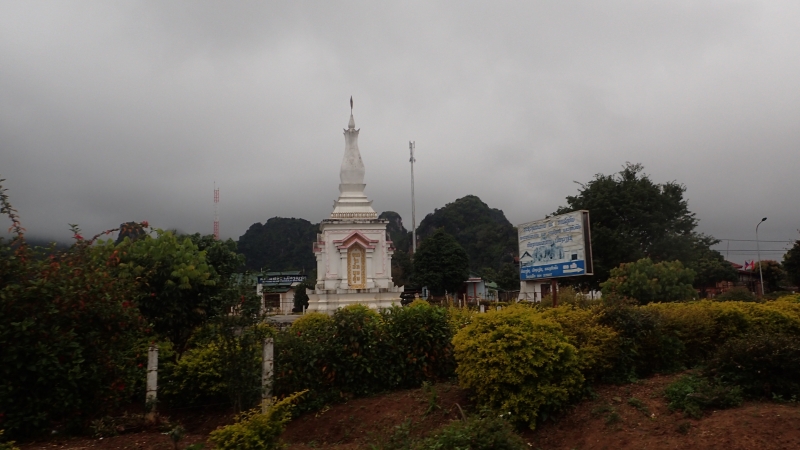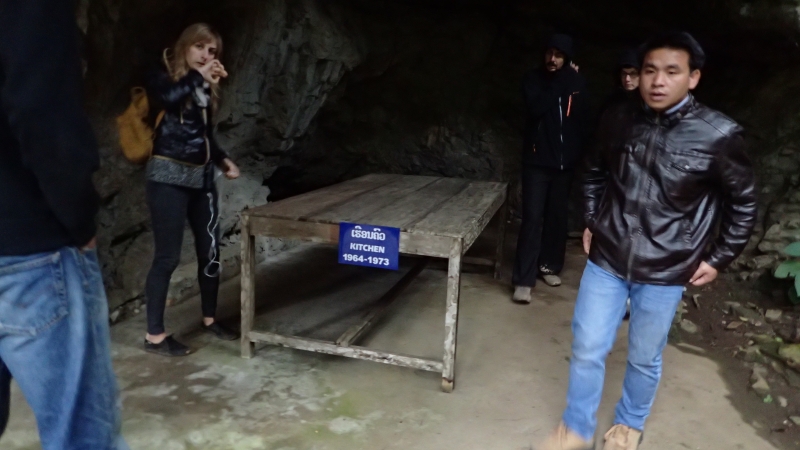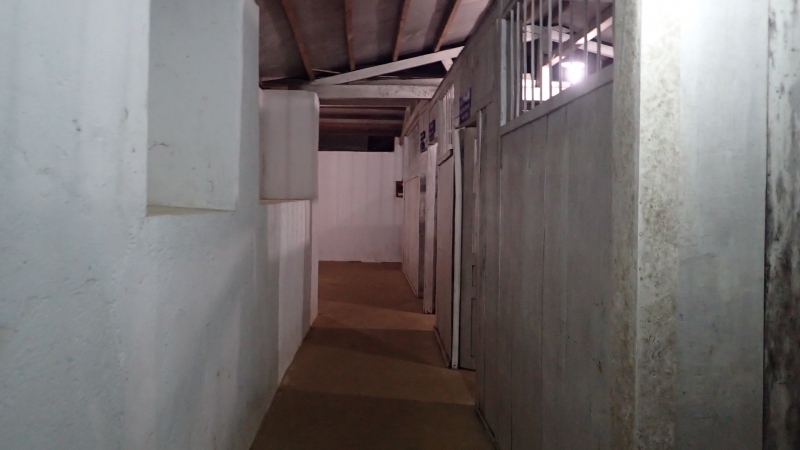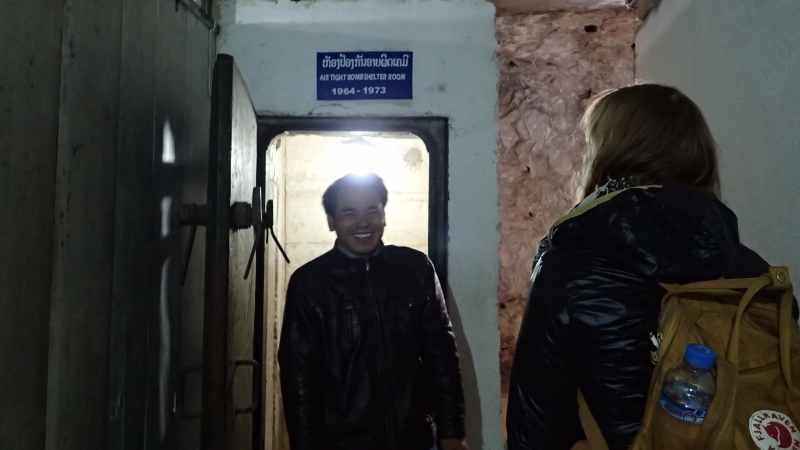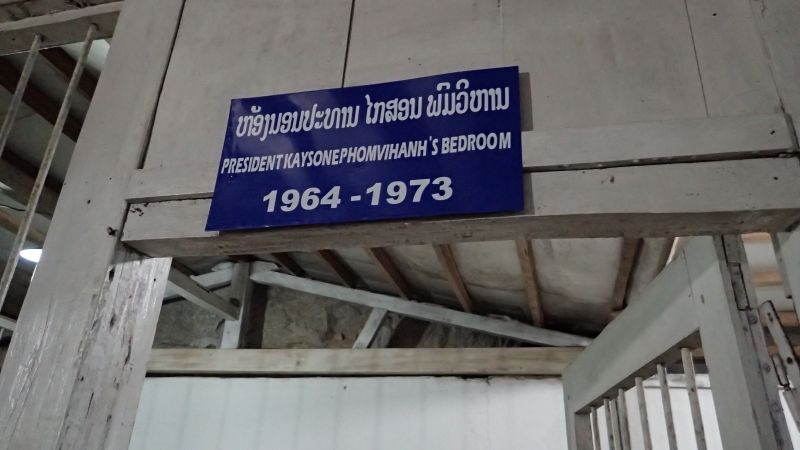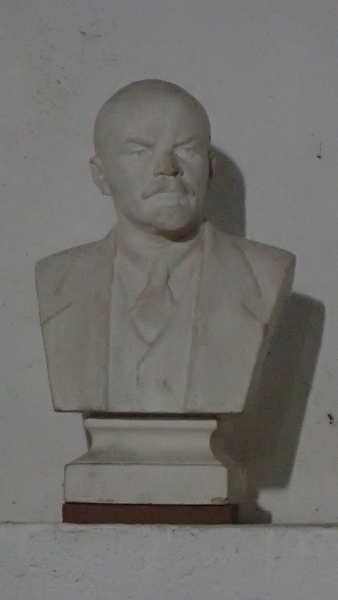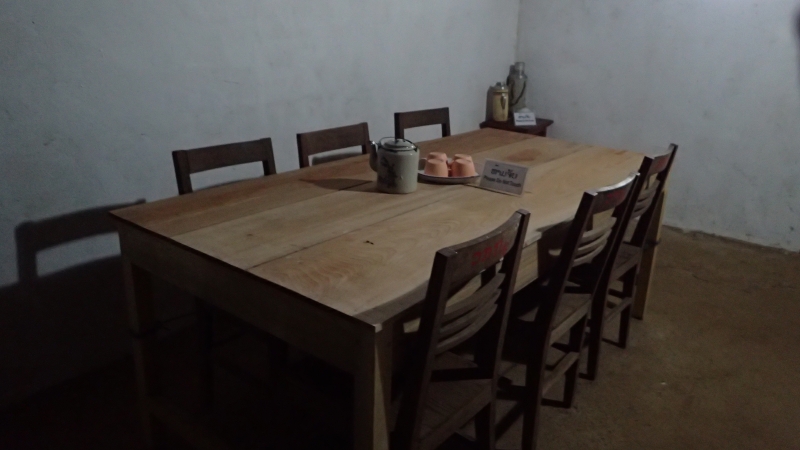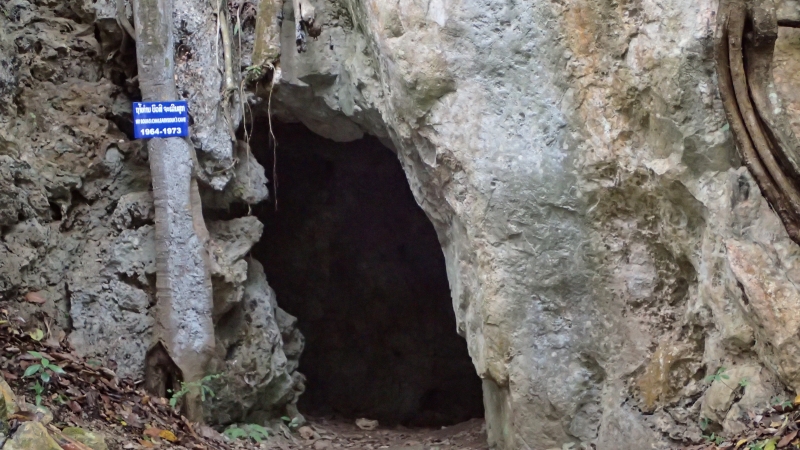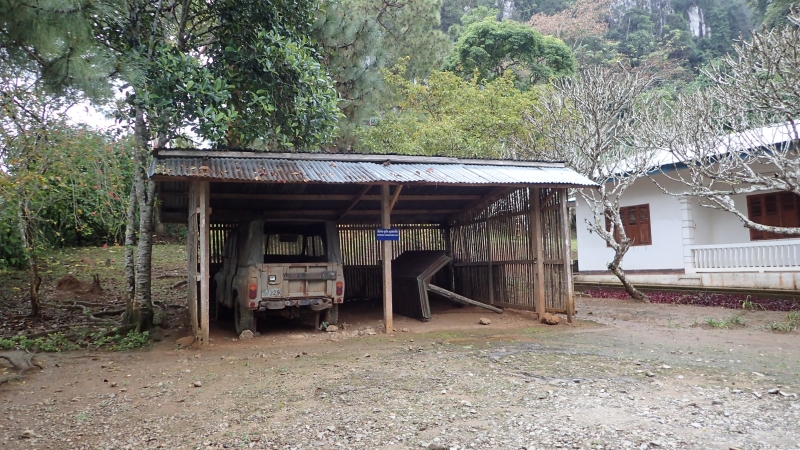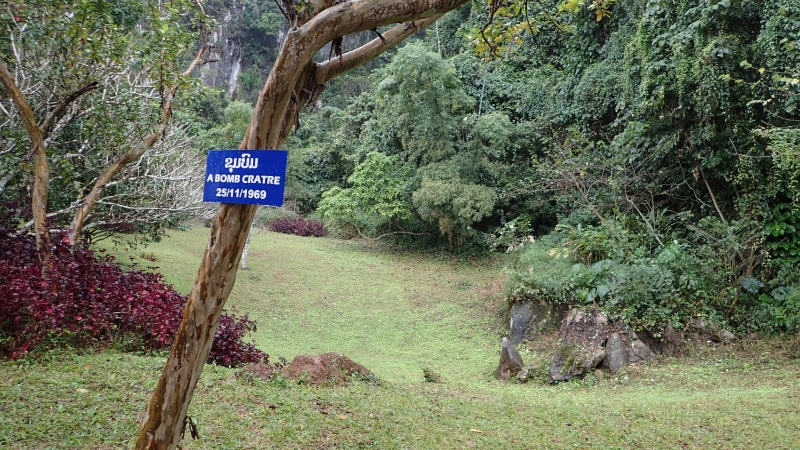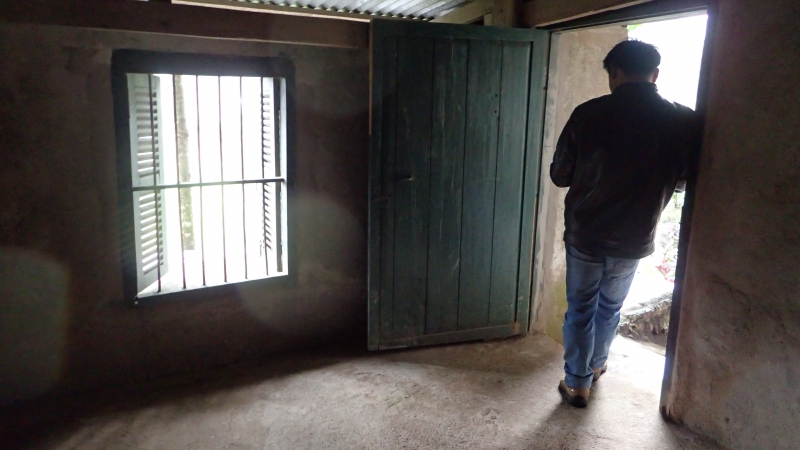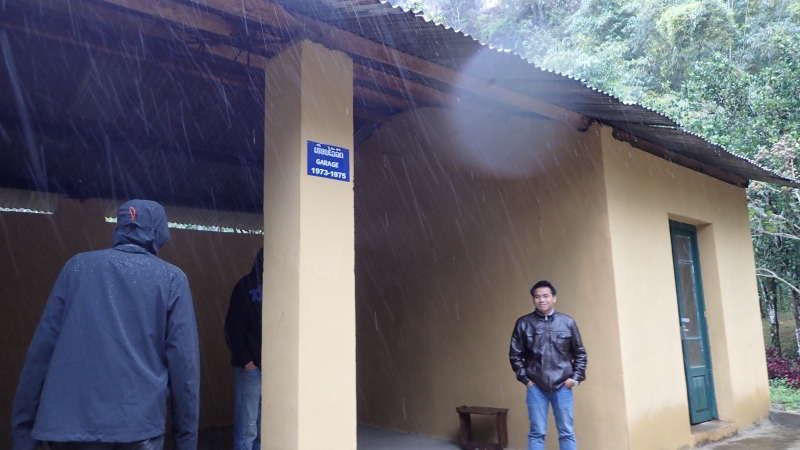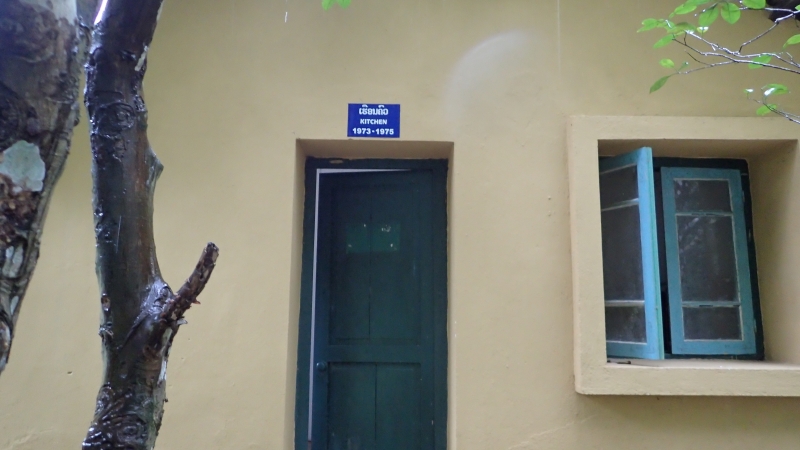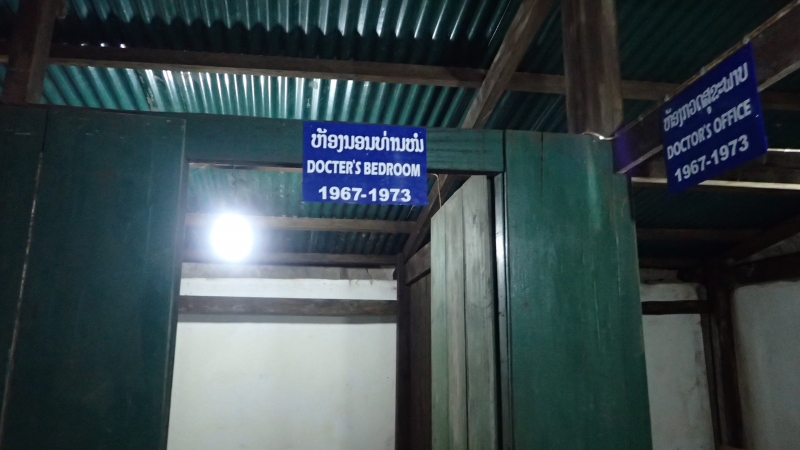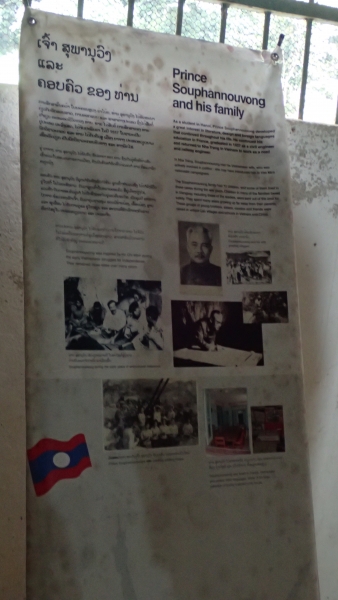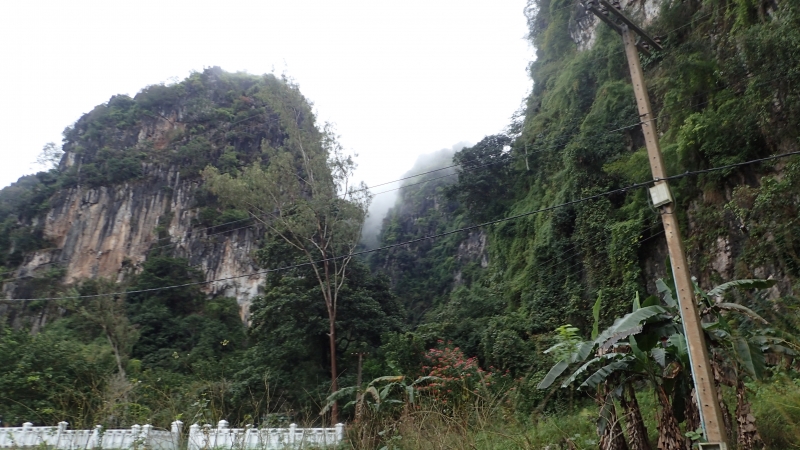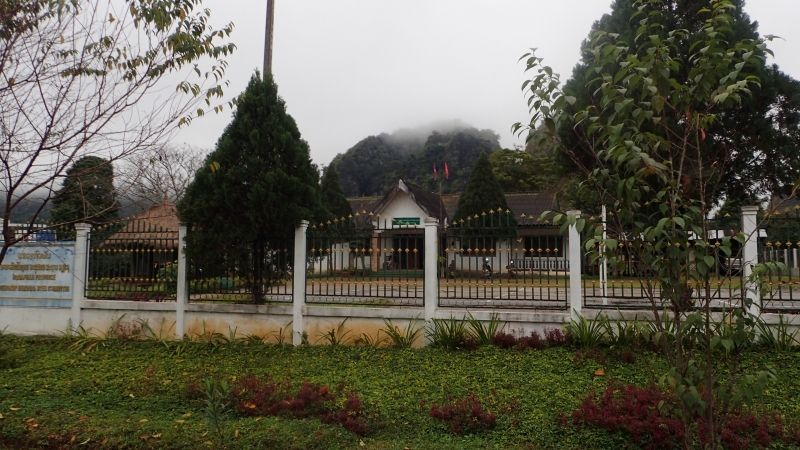Today Aad and Mike have decided not to join us in a tour of the local caves….they will head South instead and we will catch up with them in the next few days.
So after a breakfast of banana pancakes at the Indian place where we had dinner last night, Vince and I walked back to the hotel to see the boys off….including the three sided kiss goodbye they do in the Netherlands! We quickly got ready in our bike gear and headed off to the Cave Visitor Centre in time for the 9.00am tour (the next one isn’t until 1.00pm).
It was raining so we got a bit damp but most of the time we were inside the caves. We had to be careful as there were sloppy muddy inclines as well as thick slippery moss to content with. The audio guide was very informative and included testimonies from people who were actually involved at the time. I found it very sad but a unique opportunity to share an essential part of the history of Laos.
Viengxay is a small town located in the northern part of Laos, just 52km from the Vietnamese border. Houaphanh province hosts magnificent limestone mountains which include natural caves that were extended by hand and dynamite for people to hide inside during the bombing of Laos. From 1964 to 1973, over 400 caves sheltered more than 20,000 Lao nationalists offering protection from the heaviest bombing ever carried out in history. More bombs were dropped on Laos by the Americans than were dropped on all of Europe in WWII, at a cost of 2 million dollars per day! The Pathet Lao people developed an underground city complete with a hospital, school, shops, government offices, a bakery, a printshop, radio station and even a theatre. It is considered the birthplace and spiritual home of the Lao PDR.
Today, Viengxay is a small remote town frequented by many Western bicycle or motorbike riders, there are hot springs close by as well as many small villages with differing ethnic groups (Tai daeng, Yao, Kamu, Hmong) and some of the finest silk and cotton weaving you will ever see!
The cave tour we took today is part of a joint project by the Laos Government with European donor assistance to bring development to this very poor and remote region through sensitive tourism development. The audio tour was developed and managed by a private Australian company and ends with these words:
“The war is still having its effect on children born decades after the conflict ended. UXO – unexploded ordnance (that didn’t detonate when fired or dropped) – contaminates the whole country and prevents people from using land. UXO might be hidden under a school playing field or a house, or in fields…. When they are disturbed, by digging or often by children picking them up and playing with them, they explode.” It is estimated that UXO kills and injures one person a day, every day in Laos and that it will take another 20 years to clear them.”
The price we paid (60,000 Kip each, A$10) for our tour funds guide training, research and conservation of the caves and the artefacts. This directly contributes to the historical conservation of the site, and helps get the people of Houaphanh out of poverty. So we were happy to have helped out just a little bit!


